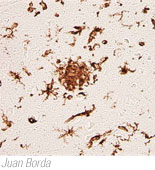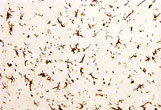 |
  DISEASES WE INVESTIGATE DISEASES WE INVESTIGATE
West Nile Virus
Overview
West Nile Virus (WNV) is a potentially serious illness. It is now thought that WNV is established as a seasonal epidemic in North America that flares up in the summer and continues into the fall.
- For most, the risk of infection is low. Less than 1% of people who are bitten by mosquitoes develop any symptoms of the disease, and relatively few mosquitoes actually carry WNV.
- In 2003, there were 9,862 human cases of WNV disease and 264 deaths reported in the United States. There are no reliable estimates for the number of cases of West Nile encephalitis cases that occur worldwide.
- People who spend a lot of time outdoors are more likely to be bitten by an infected mosquito and should take special care to avoid mosquito bites. People over the age of 50 are more likely to develop serious symptoms of WNV if they do get sick and should take special care to avoid mosquito bites. The risk of getting WNV through blood transfusions and organ transplants is very small and should not prevent people who need surgery from having it.
- The WNV, first found in Africa in 1937, was identified in the Western Hemisphere for the first time in 1999 in the New York City area. Since then, it has spread quickly throughout most of the United States. From January, 2003, to the end of October, 2003, 44 states and the District of Columbia had reported cases of WNV disease.
Infectious Agent
- WNV is one of a group of disease-causing viruses called flaviviruses which are spread by insects, usually mosquitoes. Other flaviviruses include yellow fever, dengue and St. Louis encephalitis viruses.
Transmission
- Generally, WNV is spread by the bite of an infected mosquito. Mosquitoes are WNV carriers that become infected when they feed on infected birds. Infected mosquitoes can then spread WNV to humans and other animals when they bite.
- In a very small number of cases, WNV also has spread through blood transfusions, organ transplants, breast-feeding, and even one reported case during pregnancy from mother to infant.
- WNV is not spread through casual contact such as touching or kissing a person with the virus.
The Disease
- WNV infection can be suspected in a person based on clinical symptoms and patient history. Laboratory testing is required for a confirmed diagnosis.
- Infection with WNV can be asymptomatic or can lead to West Nile fever or severe West Nile disease.
- Most people who are infected with WNV will not develop any type of illness.
- People typically develop symptoms between 3 and 14 days after they are bitten by an infected mosquito.
- Symptoms include fever, headache, fatigue, and body aches, occasionally with a skin rash on the trunk of the body and swollen lymph glands.
- The symptoms of severe disease include headache, high fever, neck stiffness, stupor, disorientation, coma, tremors, convulsions, muscle weakness, and paralysis.
- Mild WNV illness improves on its own, and people do not necessarily need to seek medical attention.
Treatment
- There is no specific treatment for WNV infection. In cases with mild symptoms, people experience symptoms such as fever and aches that pass on their own. In more severe cases, people usually need to go to the hospital where they can receive supportive treatment including intravenous fluids, help with breathing and nursing care.
Our Research
- The rhesus monkey model of WNV infection is used in pathogenesis and vaccine studies.
- Initial studies better defined WNV induced disease in the rhesus macaque and focused on comparisons of different routes of infection and outcome. Viral load measurement in blood was performed. It was found that rhesus macaques demonstrated lower levels of virus in the peripheral blood than is seen in humans. It was also found that the duration of virus in the peripheral blood was shorter than in humans precluding transmission back to mosquitoes.
- Based on these early model development studies, several WNV vaccine research studies have been initiated and completed. It is planned to move some of the successful vaccine candidates into human clinical trials.
|
 |


